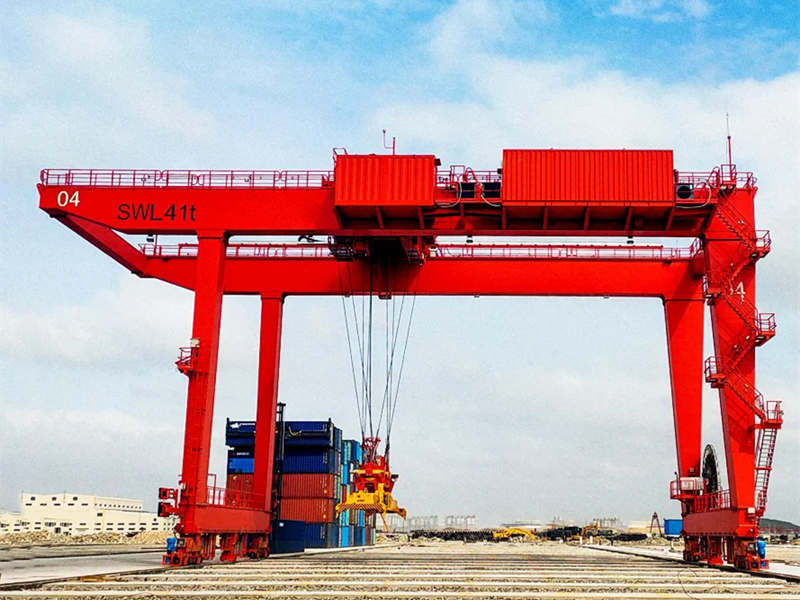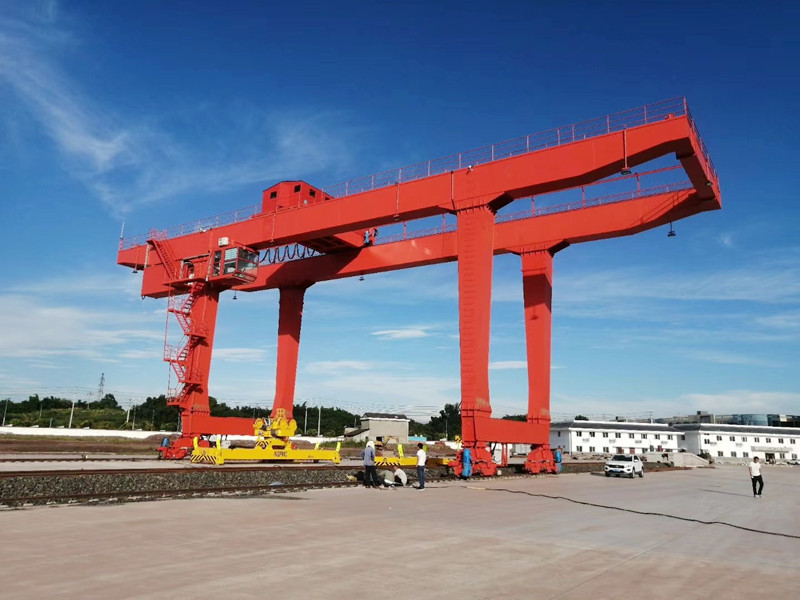Operating a 50 ton gantry crane requires skill, precision, and a deep understanding of the equipment. These cranes are heavy-duty machines designed for lifting and moving substantial loads within industrial environments such as shipyards, construction sites, and manufacturing facilities. Proper operation is essential to ensure safety, efficiency, and the longevity of the equipment. Here is a comprehensive guide on how to operate a 50 ton gantry crane:

Pre-Operation Inspection
Before operating the 50 ton gantry crane, conduct a thorough pre-operation inspection. Check for any visible signs of damage, wear, or loose components. Inspect the heavy duty crane structure, trolley, hoist, and electrical systems. Ensure that all safety devices, such as limit switches and emergency brakes, are in working order. Verify that the load capacity indicators and control systems are calibrated and functioning correctly.
Check the Surrounding Environment
Assess the operating environment to ensure it is safe and suitable for crane operation. Clear the area of obstacles and ensure there are no personnel or other equipment in the crane’s path. Check the condition of the floor or runway to ensure it can support the crane’s weight and the anticipated load.
Review Load Capacity and Rigging
Determine the weight of the load to be lifted and ensure it does not exceed the crane’s rated capacity. Inspect the rigging equipment, including slings, hooks, and lifting attachments, to ensure they are in good condition and suitable for the load. Properly rigging the load is crucial for maintaining stability and preventing accidents.
Positioning the Crane
Carefully position the 50 ton gantry crane in a way that provides optimal access to the load. Ensure that the crane is on level ground, and the outriggers (if applicable) are properly deployed for stability. Align the crane with the load and make any necessary adjustments to the crane’s position.
Powering Up the Crane
Power up the gantry crane according to the manufacturer’s guidelines. This may involve starting the main power supply, activating the control panel, and ensuring that all safety systems are operational. Check the emergency stop buttons to ensure they are functional and accessible.
Control Panel Familiarization
Familiarize yourself with the controls on the crane’s control panel. Understand the functions of each lever, button, or joystick. Many modern gantry cranes have intuitive control systems, but operators should still undergo training to ensure they are proficient in using the controls for precise and safe operation.
Lifting and Moving the Load
Once the crane is powered up and the controls are understood, carefully lift the load using the hoist. Use smooth and controlled movements to avoid swinging or sudden jerks. Lift the load to a safe height before moving it horizontally. When moving the load, keep it at a low height to maintain stability.

Avoiding Sudden Stops and Jerks
When starting, stopping, or changing the direction of motion, avoid sudden stops and jerks. Gradual acceleration and deceleration help maintain control over the load and prevent unnecessary stress on the crane’s components. Smooth operation is crucial for both safety and load stability.
Communication with Signalers
If signalers are assisting in the operation, establish clear communication signals. Use standardized hand signals or communication devices to ensure that the entire lifting operation is coordinated. Effective communication is essential, especially in environments where visibility may be limited.
Monitoring Load Swinging
Constantly monitor the load for any swinging or unintended movements. Use slow and controlled motions to correct any swinging, and avoid sudden changes in direction. Proper load control is essential for preventing accidents and ensuring the safety of both the operators and surrounding personnel.
Emergency Procedures
Be familiar with the emergency procedures outlined in the crane’s manual. Know how to engage emergency brakes, activate emergency stop buttons, and safely lower the load in case of power failure or other emergencies. Regularly conduct drills to ensure that operators are well-prepared for unexpected situations.
Post-Operation Procedures
After completing the lifting and moving tasks, carefully lower the load to the ground. Power down the crane according to the guidelines of manufacturer. Conduct a post-operation inspection to check for any wear, damage, or issues that may have occurred during the operation. Report any findings and perform necessary maintenance or repairs.
Operator Training and Certification
Only trained and certified operators should operate a 50 ton gantry crane. Operator training programs cover the safe use of the equipment, understanding load capacities, emergency procedures, and proper maintenance practices. Certification ensures that operators have the necessary skills and knowledge to operate the crane safely and efficiently.
Operating a 50 ton gantry crane is a task that demands a high level of skill, responsibility, and adherence to safety protocols. A systematic approach to pre-operation inspection, load assessment, proper positioning, controlled lifting and moving, communication, and emergency preparedness is essential for successful and safe crane operation. Regular training, ongoing maintenance, and a commitment to safety contribute to the overall efficiency and reliability of the 50 ton gantry crane in industrial applications. Operating such heavy machinery requires a combination of technical expertise, situational awareness, and a dedication to following best practices to ensure a safe and productive work environment.